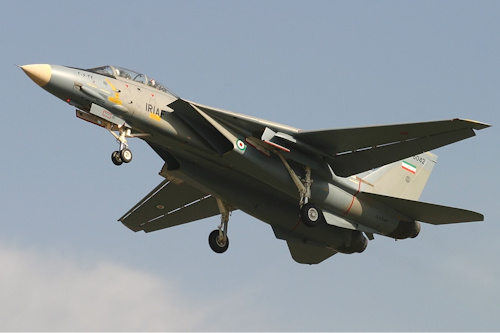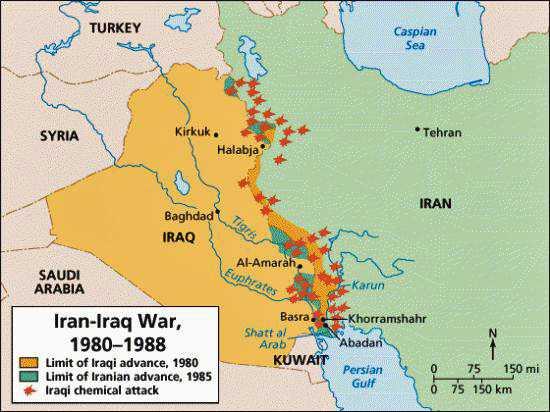After a long series of border skirmishes that had greatly contributed to raising the tension between the two countries, Saddam Hussein decided to go on the offensive, also strong news that gave the Iranian military apparatus a growing disarray. This reinforces the idea of the Iraqi senior staff to proceed with a quick flash offensive, using a strong armored armor, to conquer the Khuzestan, which was the main target, while employing another army in northern Iraq to garrison the border and keep Iranian forces occupied there.
While on paper the plan drawn up by the Iraqi political / military leadership could make sense, from a practical point of view it was nevertheless weakened by at least three essential elements. First of all, the poor coordination between weapons due to the lack of training and the lack of concrete practical experience on the subject, to which we must add the fact that we have invested everything in a blitzkrieg taking for granted the total absence of tactical arrests and the considerable friction that a mechanized war complete could entail and, finally, the great dispersion of the Iranian military formations which increased the possibility of being saved in front of a massive first strike from aviation. Strike that the Iraqi Air Force put in place on 22 September 1980, going to be the first to attack the main enemy air bases and permanently block the Iranian Air Force on the ground.
In an almost emulated gesture of the Israeli air raids of the Six Day War, the Iraqis, while causing severe damage to Iranian infrastructure, failed to achieve their main goal. On the contrary, the Iranians, who at the beginning of the raids had preferred to protect their aircraft in better protected hangars, immediately counterattacked on the afternoon of 22 September. And in this situation they immediately demonstrated their clear superiority in the air-to-air fighting that developed.
The IRIAF (Air Force of the Islamic Republic of Iran, ed) broke down within a few hours five Fitter and two Mig-23, followed the next day by five other Iraqi planes, thanks to the action of authentic aces like the captain Azimi of the 81 ° squadron of the 8 ° aerobatized, to which he managed a "double" with the launch of the missiles AIM-54 fired from his Tomcat.
It took a few days for the IrAF (Air Force of Iraq, ed) to get some killing too. Two F-5Es were shot down by the MiG-21 MF piloted by SA Razak, credited with two more victories in October of the same year.
In general, however, in the first phase of hostilities and throughout the 1980, the loot of Iraqi pilots remained modest. Nothing to do with the Iranian 31 1980 December 67 could count on 21 between MiG-23 or MiG-XNUMX, eighteen Fitter, a Tu-22 bomber, six helicopters and a couple of transport aircraft.

If the Iranians were able to maintain a clear supremacy in air-to-air duels, however, they could not adequately support their ground forces. Iraqis took advantage of this in the first weeks of the war.
In the north, while the 1 ° and the 11 ° division remained a garrison in Kurdistan, the 4 ° mechanized division attacked the border and wrested the Iranians, after days of hard fighting, the locality of Panjwin, thus threatening directly the most important centers of Persian Kurdistan.
In the central section of the front, instead, the 22 September took the 7 ° mechanized division forward to attack the strategic node of Qasr-e-Shirin. It is a junction that the attacking forces will conquer after an intense day of fighting and then threaten the provincial capital of Kermanshah.
Meanwhile, the 2 1st Iraqi Infantry Division attacked and gained momentum Meheran and then launched on Llam. At the end of the day he had thus reached the slopes of the Zagros mountains and cut the fundamental north-south road axis. Meanwhile, a brigade reinforced armored pushed on Dezful to also conquer the other strategic state junction present there. Even the two armored divisions of the II Corps were pushing deeper and deeper into the Persian territory. At one point, however, they were severely opposed by several counter-attacks coming from the sky by means of combat helicopters Cobra AH-1J of the army aviation escorted by the IRIAF fighter.
The damage caused by Iranian airplanes was terrifying for the Iraqi armored attack force. The anti-tank missiles fired by airplanes and helicopters made the Iraqis so bad that in five days the 50 per cent of the two armored divisions of the II Corps were destroyed or become unusable.
Nevertheless, units of the 9 ° armored division of the II Corps had nevertheless managed to penetrate Iranian territory for about forty kilometers, conquering the radar station of Dezful and arriving close to the Vahdati air base where the headquarters of the 4 ° aerobatized were located. .
At the gates of the aforementioned infrastructure, however, Iraqi vehicles were again the object of a terrible counterattack from the air, supported this time by a heavy artillery barrage. Because of such a state of affairs, at the 30 September the different formations of the II Corps needed a heavy reorganization. Nonetheless, I had managed to cover up and lighten the Iranian pressure on the III Corps.
This important unit had attacked the Shatt el-Arab with its own elements to ensure its control in the very first days of war. Subsequently, it penetrated the Khuzestan oil region, relying on the fact that the area was well suited to the use of large groups composed of armored vehicles. And this despite the fact that there were numerous marsh areas likely to be flooded to slow down the advance and large urban centers.
Once arrived in the area mentioned above, the 1 ° mechanized division would have to surround Ahwaz from south to form a pincer with the 10 ° corrazzata / II Corpo and thus trap the Iranian forces present there.
This, however, did not happen. With the Persian troops able to effectively disengage on the Pol-Naderi bridge and the decimation of the 10-Iraqi division by enemy aircraft, the pincer could not close.
No better fate had the 6 ° armored division and the mechanized 3 °. The first, which had attacked in the sector of Bostan passing the step of Susangerd, found himself stuck on the outskirts of the city of Ahwaz. The second, instead, which should have supported with its own action the work of the 3 division against Khorramashahr attacking the large industrial center of Abadan, found itself immediately in trouble and failed to achieve any of the goals set.
This completely dismissed the plans of the Iraqi general staff, also considering that the 3 division had advanced less than half of what was foreseen also due to the continuous Iranian air strikes not effectively opposed by the Iraqi Air Force.
Hence the need for a profound and difficult reorganization for the Iraqis already in the first week of October, of which the Iranians also benefited widely. In fact, the best available units of the garrison exercise in the other areas of the country were called back to the border, replacing the poorly armed local revolutionary militias and border troops that until then had supported most of the fighting.
Thus, Saddam's lightning war ended in nothing. And the war would have continued for another eight long years.
Also read: "Saddam's war in 1980: the historical-political premise and the Iraqi arsenal"
Also read: "Saddam's flash war in the 1980: the Iranian arsenal"
(photo: web)












